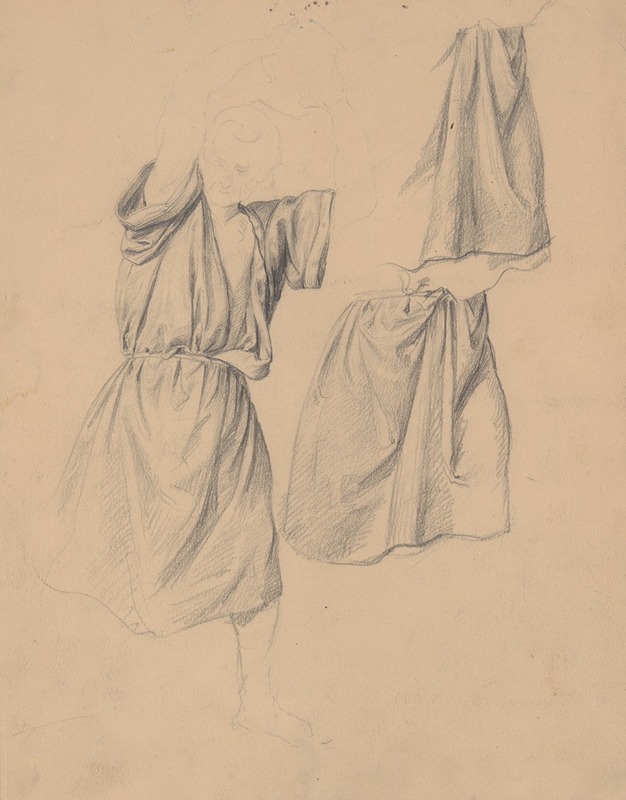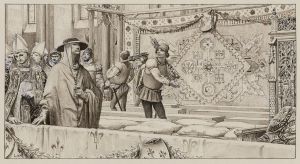
Studies of the robes of the executioner with an axe
A hand-painted replica of Józef Simmler’s masterpiece Studies of the robes of the executioner with an axe, meticulously crafted by professional artists to capture the true essence of the original. Each piece is created with museum-quality canvas and rare mineral pigments, carefully painted by experienced artists with delicate brushstrokes and rich, layered colors to perfectly recreate the texture of the original artwork. Unlike machine-printed reproductions, this hand-painted version brings the painting to life, infused with the artist’s emotions and skill in every stroke. Whether for personal collection or home decoration, it instantly elevates the artistic atmosphere of any space.
Józef Simmler was a notable Polish painter of the 19th century, renowned for his historical and genre paintings. One of his lesser-known works is "Studies of the Robes of the Executioner with an Axe." This piece is a study rather than a finished painting, focusing on the detailed depiction of the executioner's attire, which reflects Simmler's meticulous approach to historical accuracy and detail.
Simmler was born in 1823 in Warsaw, Poland, and studied art in various European cities, including Dresden, Munich, and Paris. His education exposed him to different artistic styles and techniques, which he skillfully incorporated into his own work. Simmler is best known for his historical paintings, particularly those that depict significant events in Polish history. His works often reflect a deep sense of national identity and pride, resonating with the Polish public during a time when Poland was partitioned and lacked independence.
"Studies of the Robes of the Executioner with an Axe" exemplifies Simmler's dedication to realism and historical authenticity. The study likely served as preparatory work for a larger composition, allowing Simmler to explore the textures and forms of the executioner's garments. This focus on clothing details is consistent with Simmler's broader artistic practice, where he often paid close attention to the costumes and settings of his historical subjects to enhance the narrative and emotional impact of his paintings.
The executioner, as a subject, is a figure that carries significant historical and symbolic weight. In European history, executioners were often marginalized figures, both feared and necessary, embodying the authority and finality of the law. By studying the robes of an executioner, Simmler may have been exploring themes of justice, power, and mortality, common motifs in historical art.
Simmler's work is characterized by its precise draftsmanship and the careful rendering of details, qualities that are evident in this study. His ability to convey texture and weight through fabric is notable, as is his use of light and shadow to create depth and volume. These skills not only demonstrate his technical proficiency but also his commitment to capturing the essence of his subjects.
While "Studies of the Robes of the Executioner with an Axe" may not be as widely recognized as some of Simmler's other works, it contributes to our understanding of his artistic process and the themes that interested him. Simmler's legacy as a painter is marked by his ability to blend historical narrative with a keen eye for detail, making his studies and finished works valuable contributions to 19th-century Polish art.
Józef Simmler passed away in 1868, but his works continue to be studied and appreciated for their historical significance and artistic merit. His studies, such as this one, offer insight into the meticulous preparation and thought that underpinned his larger historical compositions, reflecting a deep engagement with the past and a commitment to artistic excellence.


















